Abstract
An unusual crustacean cardioactive peptide (CCAP) from the pericardial organs of the shore crab Carcinus maenas has been purified to homogeneity by a two-step reversed-phase HPLC procedure. Manual microsequencing using the 4-(N,N-dimethylamino)azobenzene 4′-isothiocyanate/phenylisothiocyanate double-coupling technique and automated gas-phase sequencing of the oxidized peptide revealed that CCAP is a nonapeptide (Mr 957) of the sequence Pro-Phe-[unk]Cys-Asn-Ala-Phe-Thr-Gly-Cys-NH2. We have confirmed the sequence by chemical synthesis of the C-terminally amidated and nonamidated forms of the peptide. The presence of the amide group was indicated by lack of susceptibility to carboxypeptidase A and Y treatment and was confirmed by the observation that the native CCAP comigrated with the amidated synthetic peptide on HPLC. Native and synthetic CCAP displayed high accelerating activity on a semi-isolated crab heart preparation, whereas the nonamidated synthetic peptide was of much lower potency. The effect of CCAP was both inoand chronotropic. The two pericardial organs of one animal yielded 30-40 pmol of extractable CCAP. Its sequence does not resemble that of any known neuropeptide. However, a “mirror-image” similarity to vasopressin is conspicuous.
Keywords: crustacean neuropeptide, amino acid sequence, cardioactive neurohormone, neurosecretion
Full text
PDF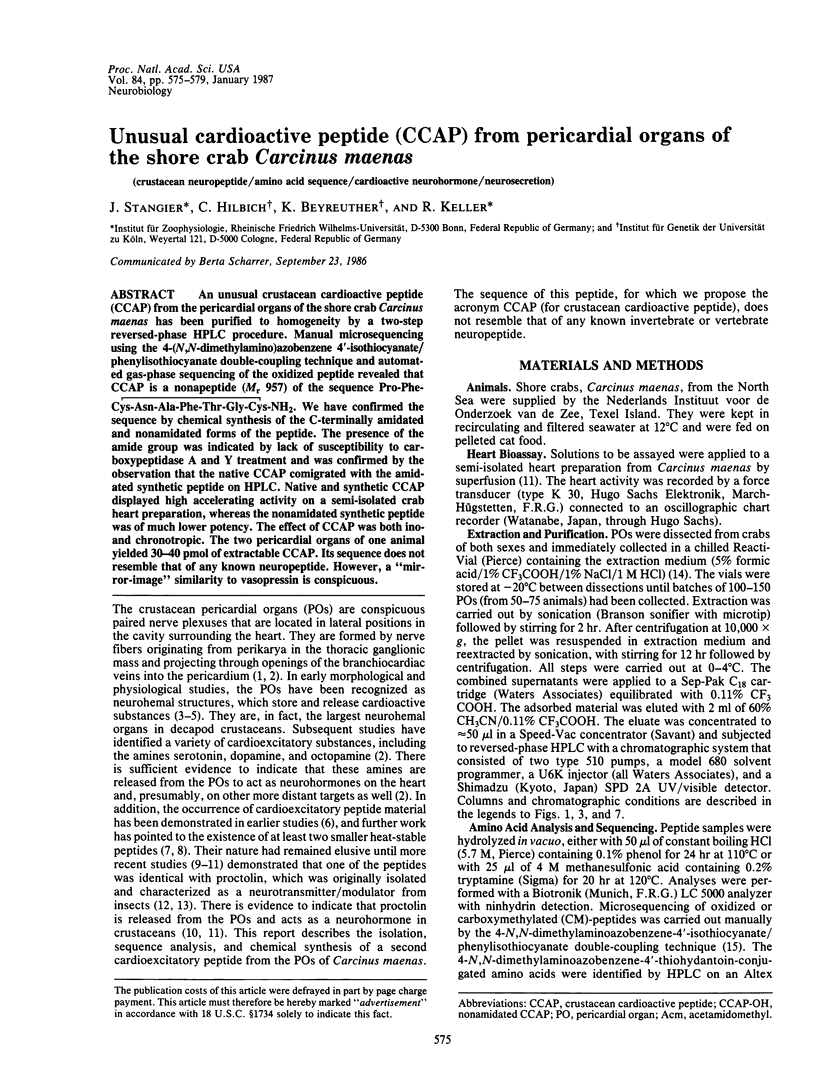
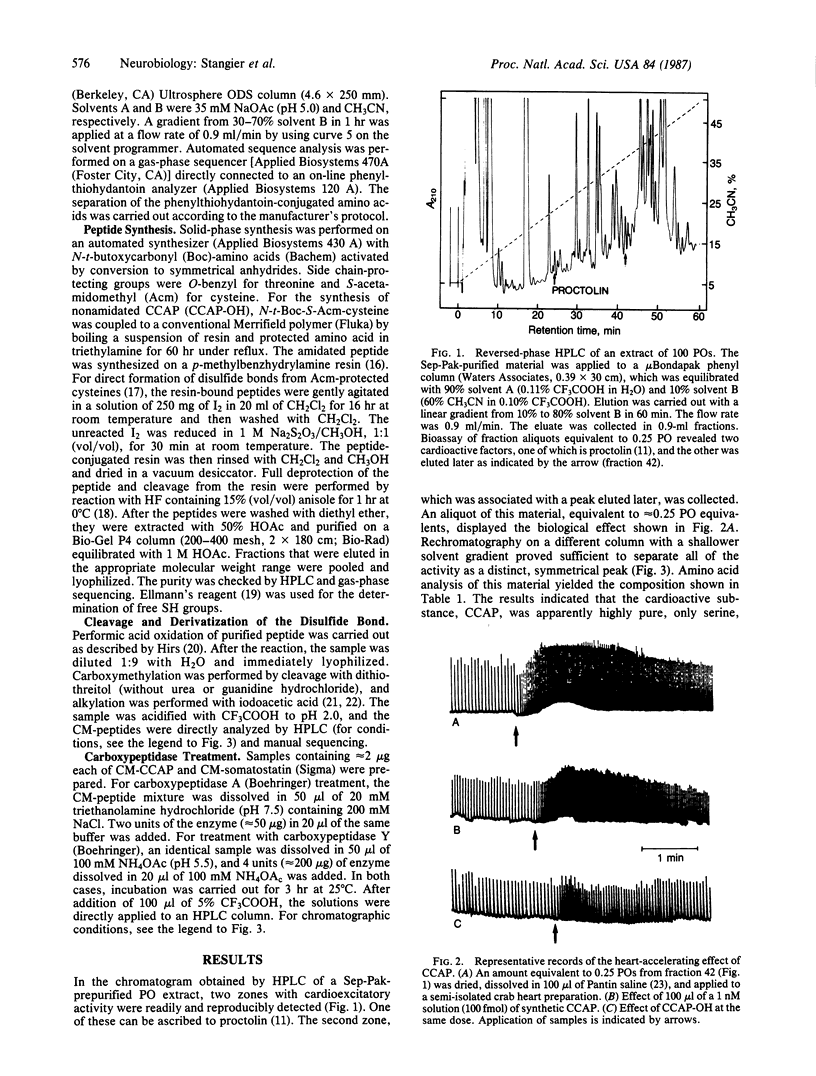
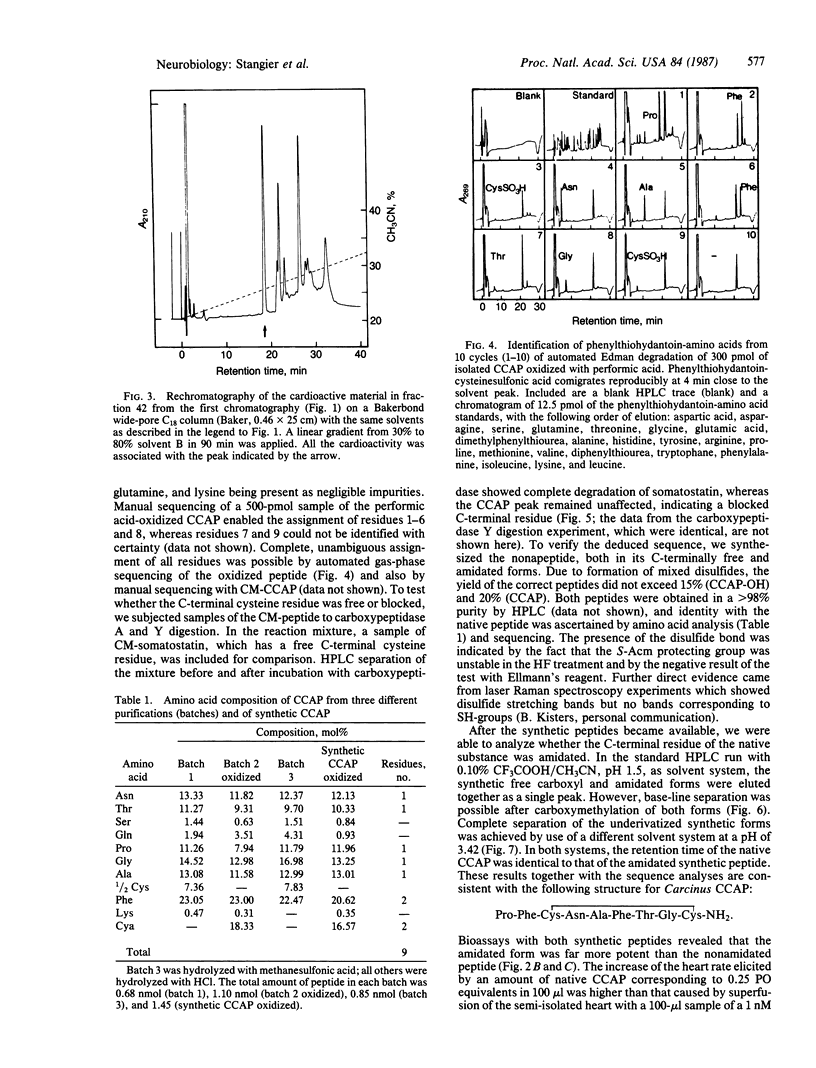
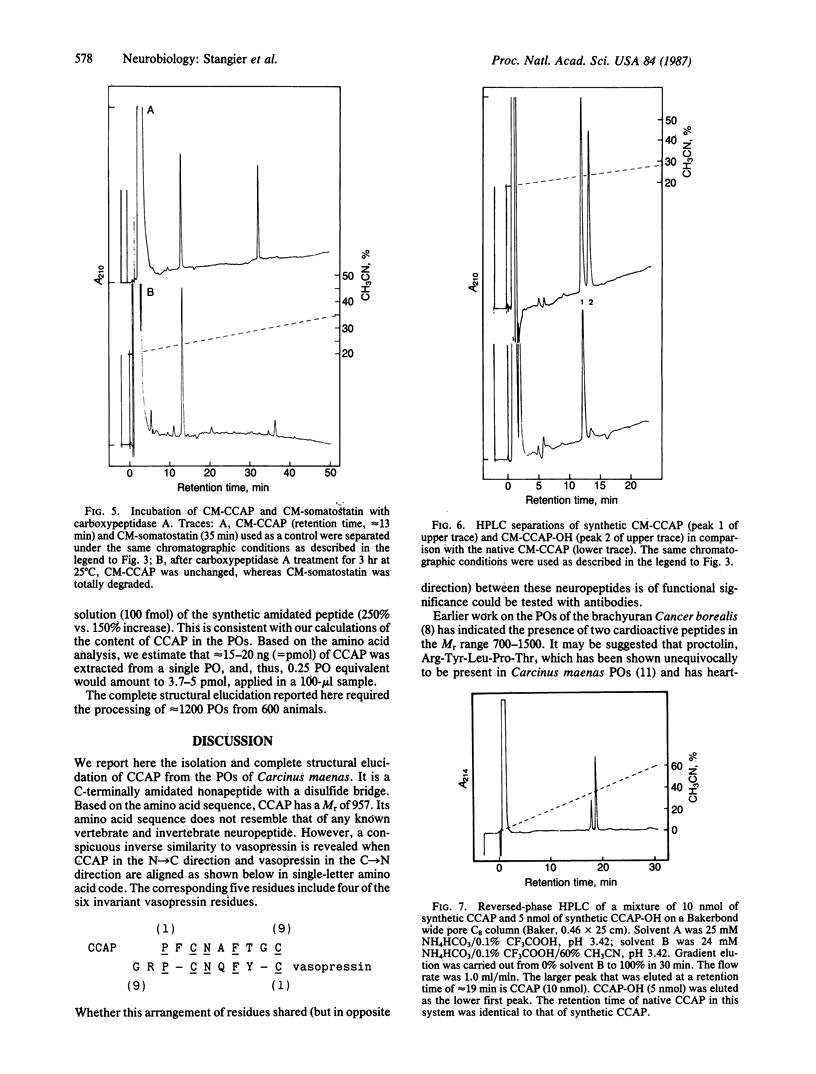
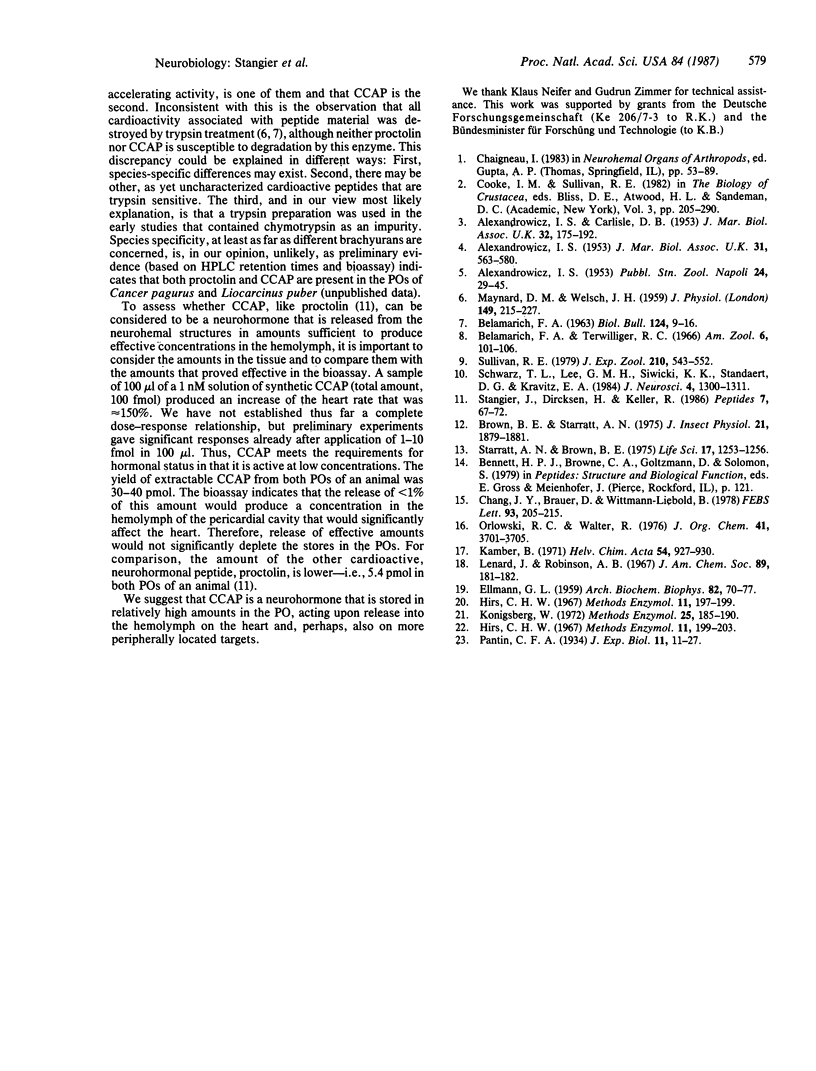
Selected References
These references are in PubMed. This may not be the complete list of references from this article.
- Belamarich F. A., Terwilliger R. C. Neurosecretion of invertebrates other than insects. I. The nature and localization of neurosecretory substances. Isolation and identification of cardio-excitor hormone from the pericardial organs of Cancer borealis. Am Zool. 1966 May;6(2):101–106. doi: 10.1093/icb/6.2.101. [DOI] [PubMed] [Google Scholar]
- ELLMAN G. L. Tissue sulfhydryl groups. Arch Biochem Biophys. 1959 May;82(1):70–77. doi: 10.1016/0003-9861(59)90090-6. [DOI] [PubMed] [Google Scholar]
- Kamber B. Cystinpeptide aus (S-Acetamidomethyl-cystein)-peptiden durch Oxydation mit Jod: Die Synthese von cyclo-L-Cystin. Helv Chim Acta. 1971;54(3):927–930. doi: 10.1002/hlca.19710540319. [DOI] [PubMed] [Google Scholar]
- Lenard J., Robinson A. B. Use of hydrogen fluoride in Merrifield solid-phase peptide synthesis. J Am Chem Soc. 1967 Jan 4;89(1):181–182. doi: 10.1021/ja00977a057. [DOI] [PubMed] [Google Scholar]
- Maynard D. M., Welsh J. H. Neurohormones of the pericardial organs of brachyuran Crustacea. J Physiol. 1959 Dec;149(2):215–227. doi: 10.1113/jphysiol.1959.sp006336. [DOI] [PMC free article] [PubMed] [Google Scholar]
- Schwarz T. L., Lee G. M., Siwicki K. K., Standaert D. G., Kravitz E. A. Proctolin in the lobster: the distribution, release, and chemical characterization of a likely neurohormone. J Neurosci. 1984 May;4(5):1300–1311. doi: 10.1523/JNEUROSCI.04-05-01300.1984. [DOI] [PMC free article] [PubMed] [Google Scholar]
- Stangier J., Dircksen H., Keller R. Identification and immunocytochemical localization of proctolin in pericardial organs of the shore crab, Carcinus maenas. Peptides. 1986 Jan-Feb;7(1):67–72. doi: 10.1016/0196-9781(86)90063-x. [DOI] [PubMed] [Google Scholar]
- Starratt A. N., Brown B. E. Structure of the pentapeptide proctolin, a proposed neurotransmitter in insects. Life Sci. 1975 Oct 15;17(8):1253–1256. doi: 10.1016/0024-3205(75)90134-4. [DOI] [PubMed] [Google Scholar]


